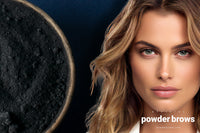11. Conclusions
Titanium dioxide is an inorganic component sourced from the Earth's crust minerals. It has a relatively large particle size (about 300 nm). It is one of the most common colorants in our everyday life, and most of us come into contact with different forms of titanium dioxide daily. It is used in many sweets, chips, cheese, and yogurt. While the EU has banned its use in food products, it remains a common food colorant in the rest of the world. Additionally, it is often found in toothpaste, sunscreens, pills, paper, and paints to make them white.
In the realm of semi-permanent makeup, pigments with titanium dioxide offer many positive aspects: better longevity, stable brighter colors, and predictable gradual fading. However, there are downsides to consider. These include its long retention in the skin, resistance to laser removal, and semantic claims labeling it as unhealthy (or even "carcinogenic"). While it is true that titanium dioxide is harder to remove than many other colorants, chemical removers can effectively eliminate it.
All things considered, it's just another substance used in pigments without considerably worse effects on health compared to other substances. However, its long retention time should certainly be considered and discussed with the client when an artist uses a pigment containing it.
Readers suggest













